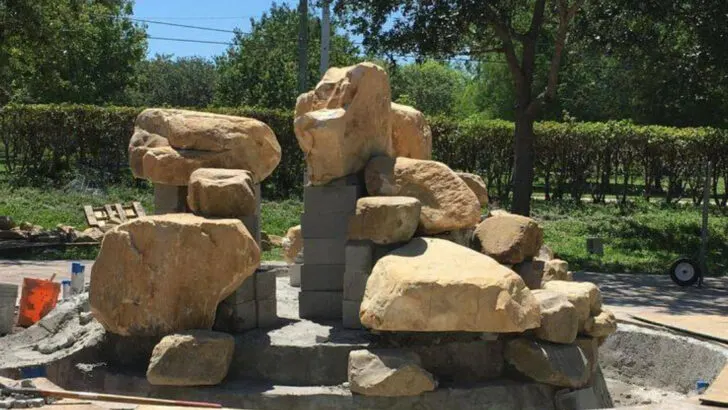Rocks can make or break your yard. Literally. Done right, they add texture, contrast, and a sense of effortless style. Done wrong? They scream “parking lot” or “forgot to finish the job.” We’ve all seen it—a gravel mess pretending to be a garden. Or a lonely boulder sitting like it crash-landed from space. But rockscaping doesn’t have to be a mystery. There is a difference between a polished, natural look and a design that makes your neighbors politely avoid eye contact. Here are six mistakes to dodge—and ten rock design choices that actually turn heads (for the right reasons).
Using Too Many Types of Rock
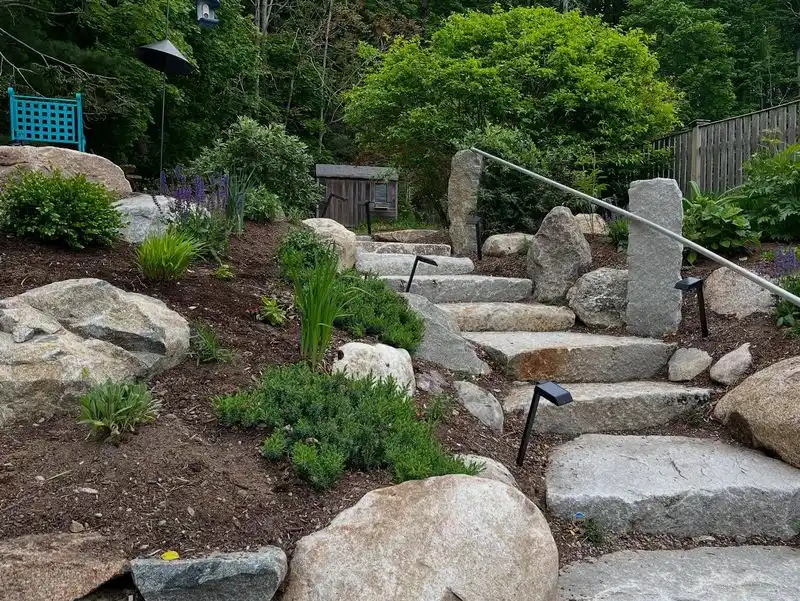
Mixing various rock types, like gravel, river rock, lava rock, and boulders, can create a disjointed appearance. Consistency in color and texture provides a cohesive and grounded feel. Experienced designers often select one main rock type to maintain harmony.
A unified aesthetic can transform a garden space, offering tranquility and balance. By focusing on a singular rock type, gardens can achieve a more polished and intentional look.
This approach encourages an appreciation of the material’s nuances, enhancing the natural beauty of the landscape.
Ignoring Drainage Needs
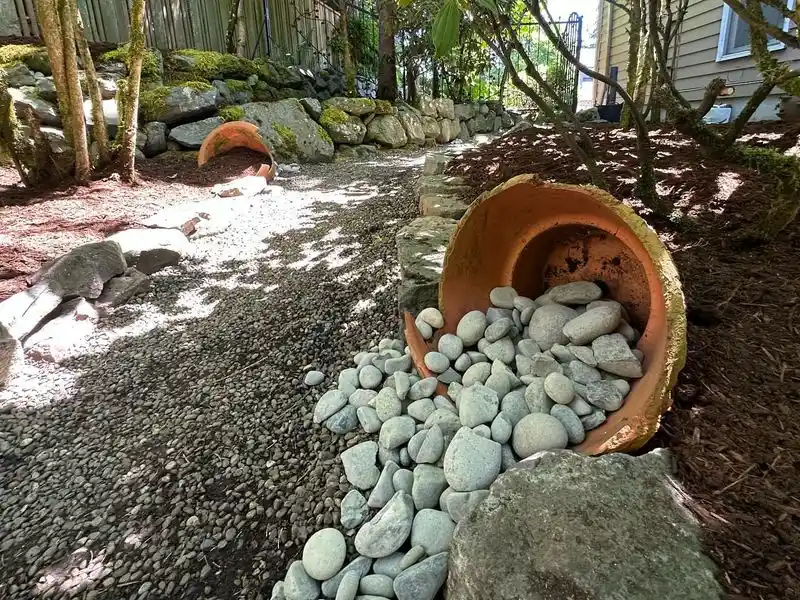
Improper rock placement can disrupt water flow, leading to pooling or waterlogged areas. Using plastic liners or dense layers without proper drainage fosters root rot in plants.
Good rock design supports water movement, ensuring plants remain healthy and vibrant. Thoughtful arrangement of rocks can guide water flow and prevent damage.
Designs that prioritize drainage not only protect plant life but also enhance the garden’s aesthetic appeal, creating a harmonious balance between form and function.
Skipping a Weed Barrier
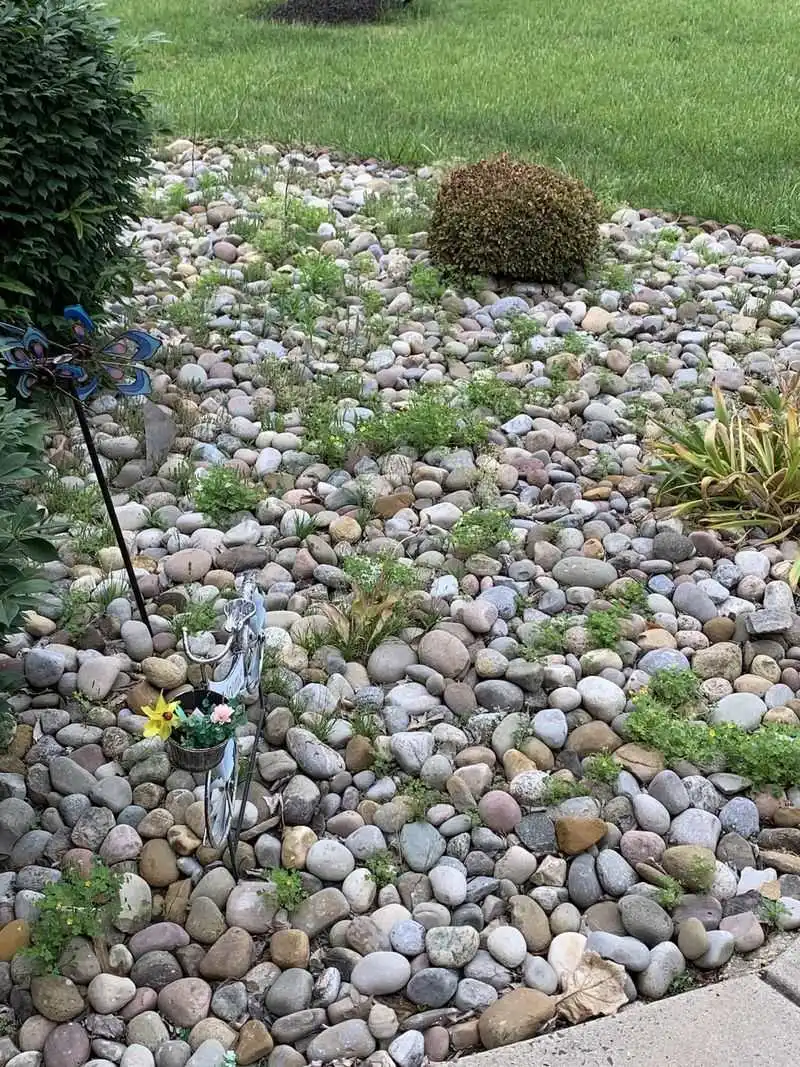
Without a weed barrier, gravel or crushed stone areas quickly become overrun with weeds. Even thick rock layers can’t stop persistent grasses from emerging.
A layer of landscape fabric or cardboard extends the neat appearance by preventing weed growth. This simple step saves time and maintenance effort.
Implementing a weed barrier ensures the garden remains tidy and well-kept, allowing the rocks to be the focal point without unwanted intrusions.
Choosing Rocks That Don’t Match the Home or Region
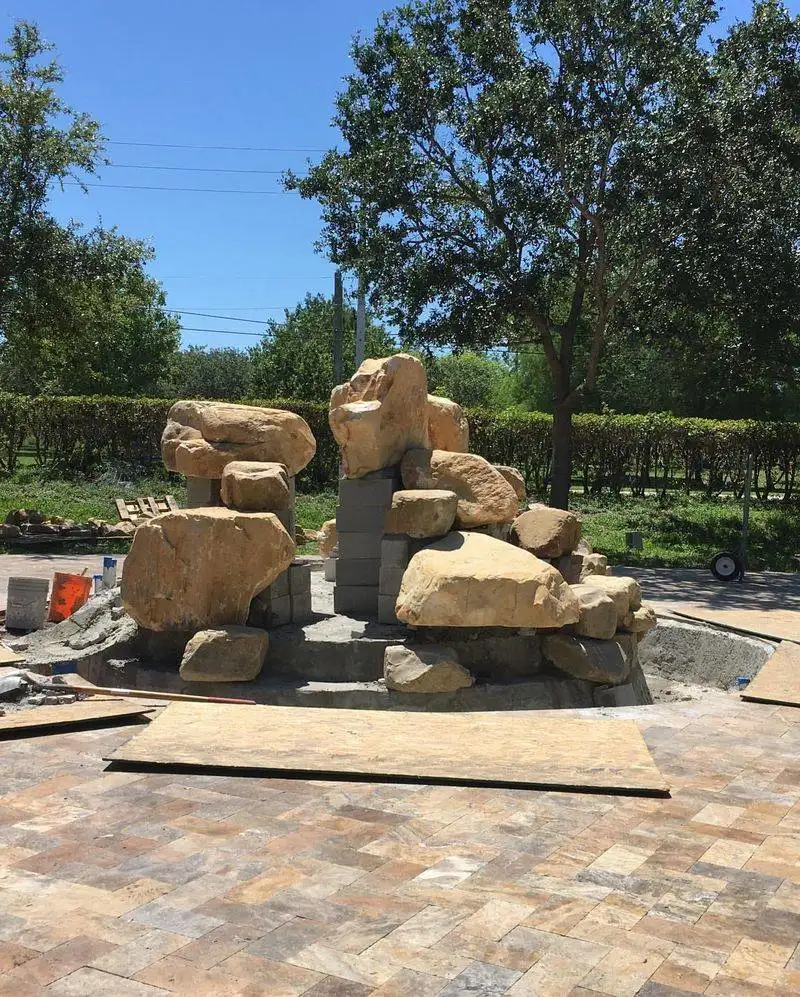
Rocks that clash with the surrounding environment can feel jarring and unnatural. Imported or brightly colored stones often seem mismatched in natural settings.
Local stones blend more seamlessly with the existing landscape, complementing the soil and vegetation. This choice enhances the garden’s organic feel.
By selecting rocks that align with the home and region, designers create a cohesive and inviting space, reflecting the inherent beauty of the local environment.
Overcrowding Rocks Around Plants
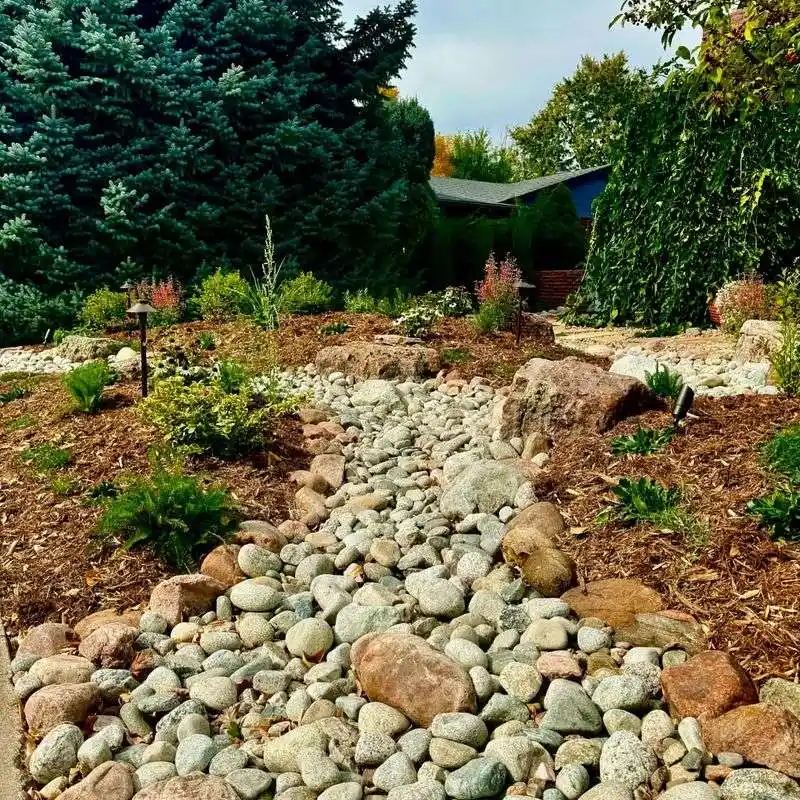
Tightly packing rocks around plant stems can trap heat and moisture, promoting disease or rot. It also complicates maintenance as plants grow.
Allowing a few inches of space around plants promotes healthier growth and ease of care. This breathing room reduces the risk of damage.
Designs that honor this space foster plant health and encourage a more natural interaction between rock and greenery, balancing aesthetics and practicality.
Overusing Small Gravel Everywhere
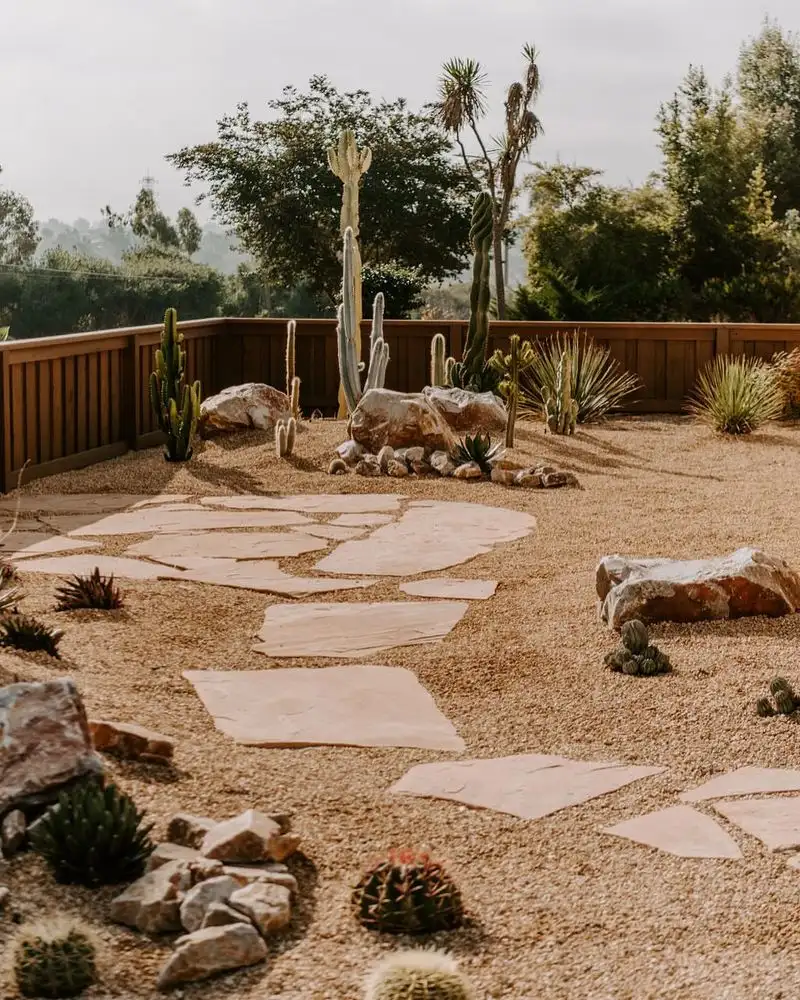
Using small gravel extensively across open areas can result in a harsh, unfinished look. Without added features like plants, curves, or edging, it often resembles a parking lot.
Intentional rock areas should balance structure, flow, and softness to create visual interest. Incorporating variety prevents monotony.
Thoughtful integration of elements within gravel spaces enhances both form and function, turning a stark area into a welcoming garden feature.
Dry Riverbed for Drainage and Texture
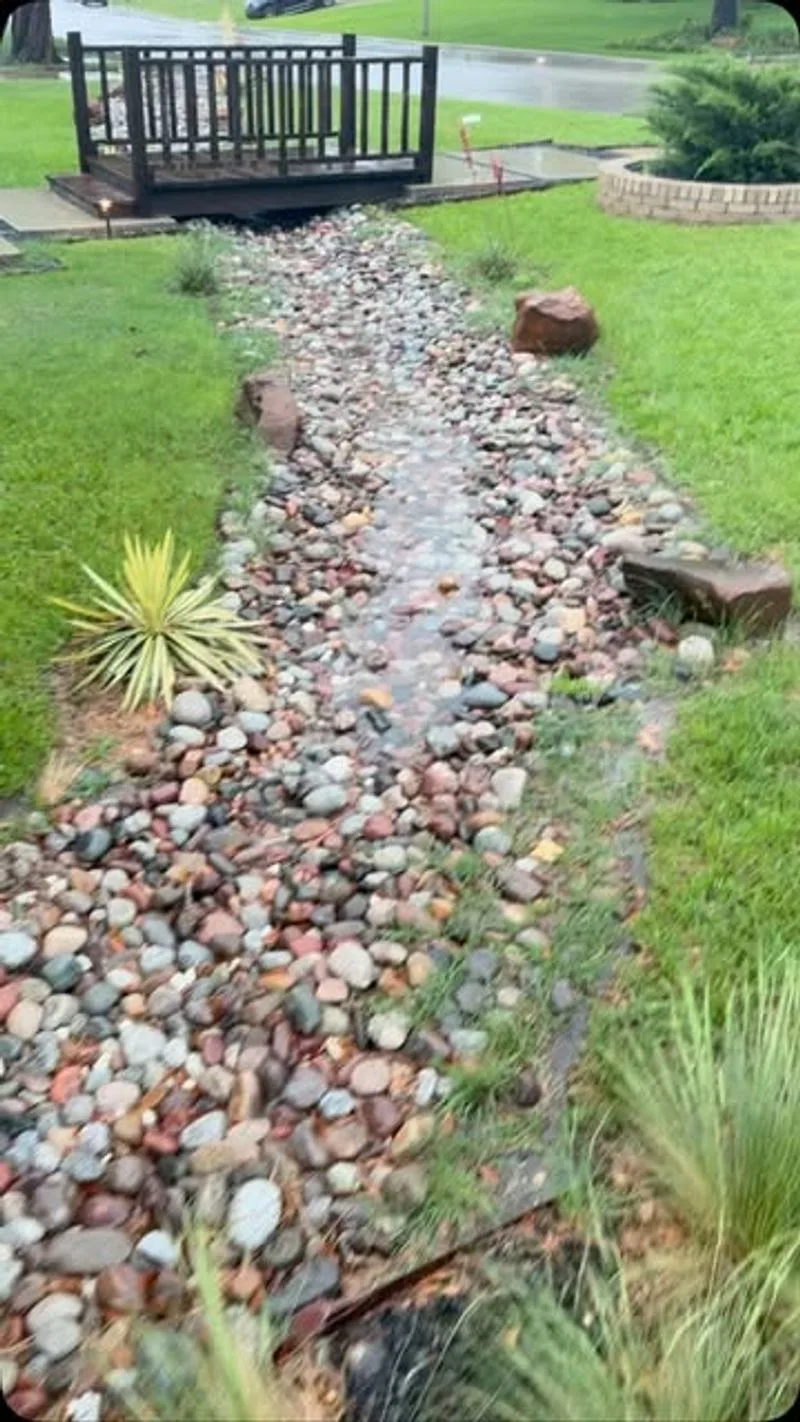
A dry riverbed with smooth stones offers visual motion and functional drainage. This design draws the eye and manages runoff efficiently.
Placing grasses or low-growing perennials alongside adds natural beauty and texture. The riverbed’s organic curves create a sense of movement even during dry periods.
A well-constructed dry riverbed serves both a practical and aesthetic purpose, enhancing garden appeal while addressing drainage challenges.
Boulders Partially Buried for a Natural Look
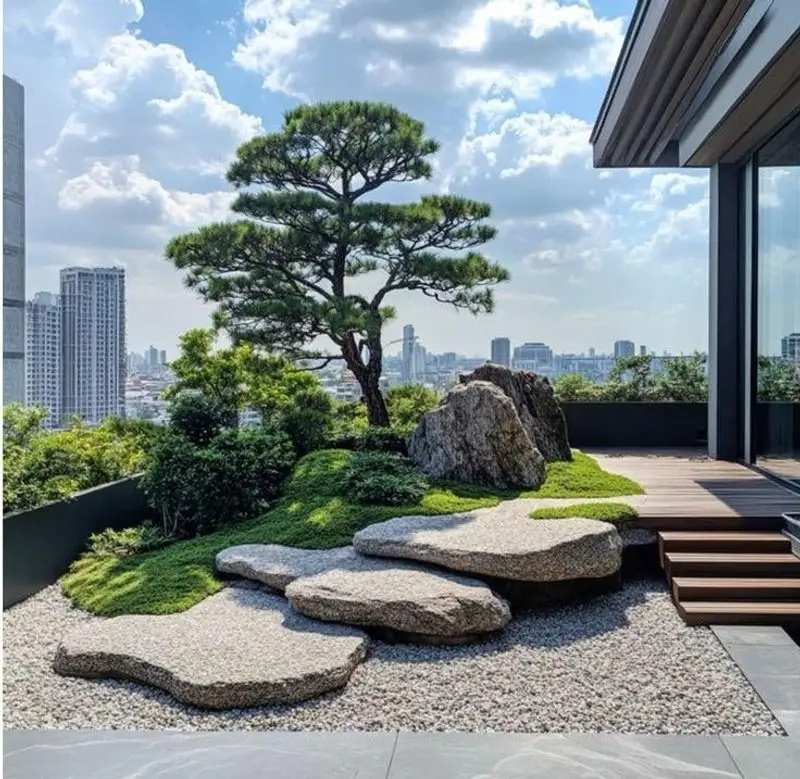
Boulders that sit atop the soil can seem out of place. Burying one-third creates the illusion of permanence, as if the boulders have always been there.
This method adds realism and stability, grounding the garden design. It reflects a genuine connection to the landscape.
By partially burying boulders, gardens gain a timeless quality, blending seamlessly with their surroundings and offering a touch of nature’s artistry.
Gravel Paths With Clear Edging
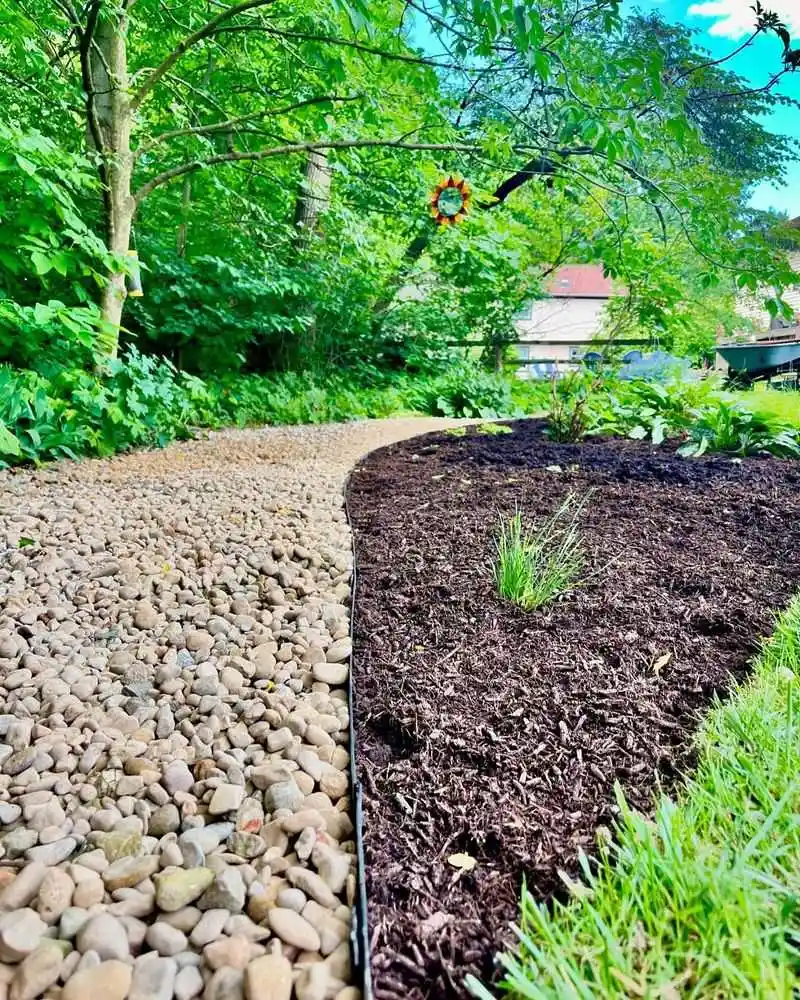
Gravel paths bordered with steel or stone remain tidy and defined, preventing gravel from spreading into garden beds. The crunch underfoot adds sensory appeal.
This design allows rain to soak through, maintaining environmental harmony. Clear edging creates visual order and distinction.
Defined paths enhance both the aesthetics and functionality of a garden, guiding movement while preserving the integrity of surrounding plant life.
Rock Mulch in Cactus and Succulent Beds
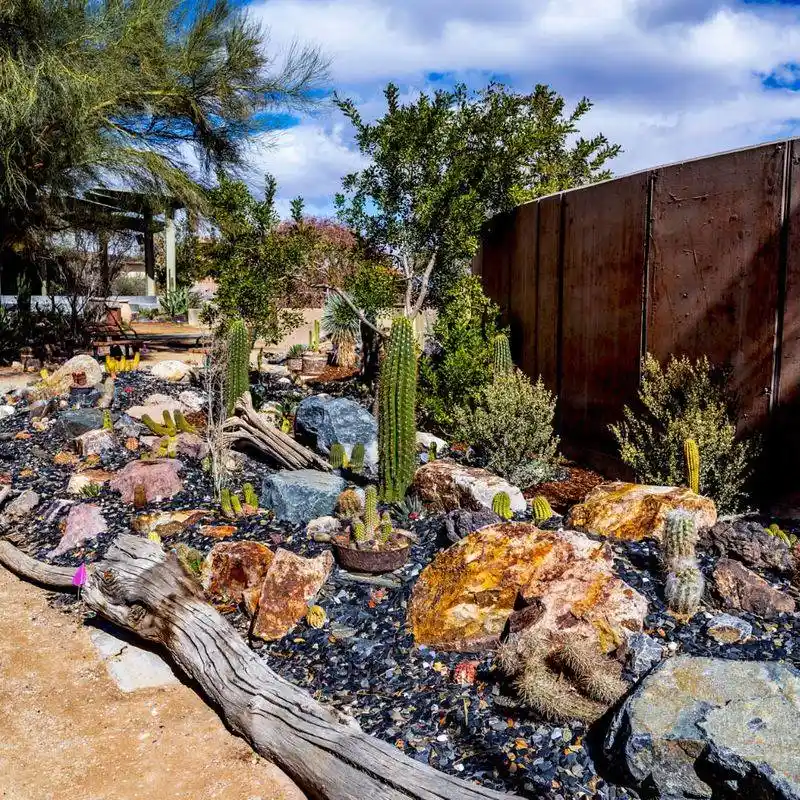
Using rock mulch around cacti and succulents mimics their native desert environment. This setup highlights the plants’ unique structures and prevents soil erosion.
The contrast between spiky foliage and smooth stones creates a striking visual. Rock mulch also reduces splashing in sloped areas.
Incorporating rock mulch in these beds showcases the beauty of drought-tolerant plants, providing a functional and visually appealing framework.
Flagstone Patios With Creeping Groundcovers
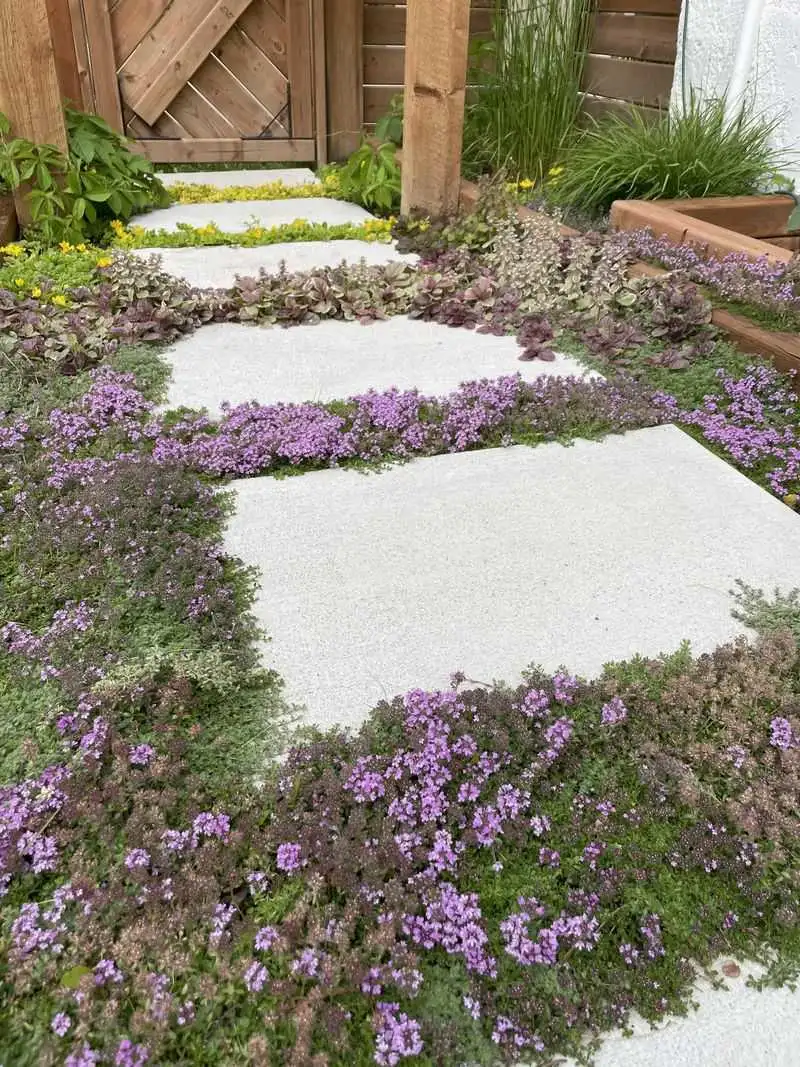
Flagstone patios with creeping groundcovers like thyme soften hardscape edges, creating a welcoming space. These plants invite barefoot exploration, adding a sensory dimension.
Spacing stones apart allows greenery to fill gaps, blending natural and built environments. This method fosters a connection between nature and design.
Integrating groundcovers with flagstone offers a harmonious blend of textures, enriching the garden’s tactile and visual experience.
Stacked Stone Borders Without Mortar
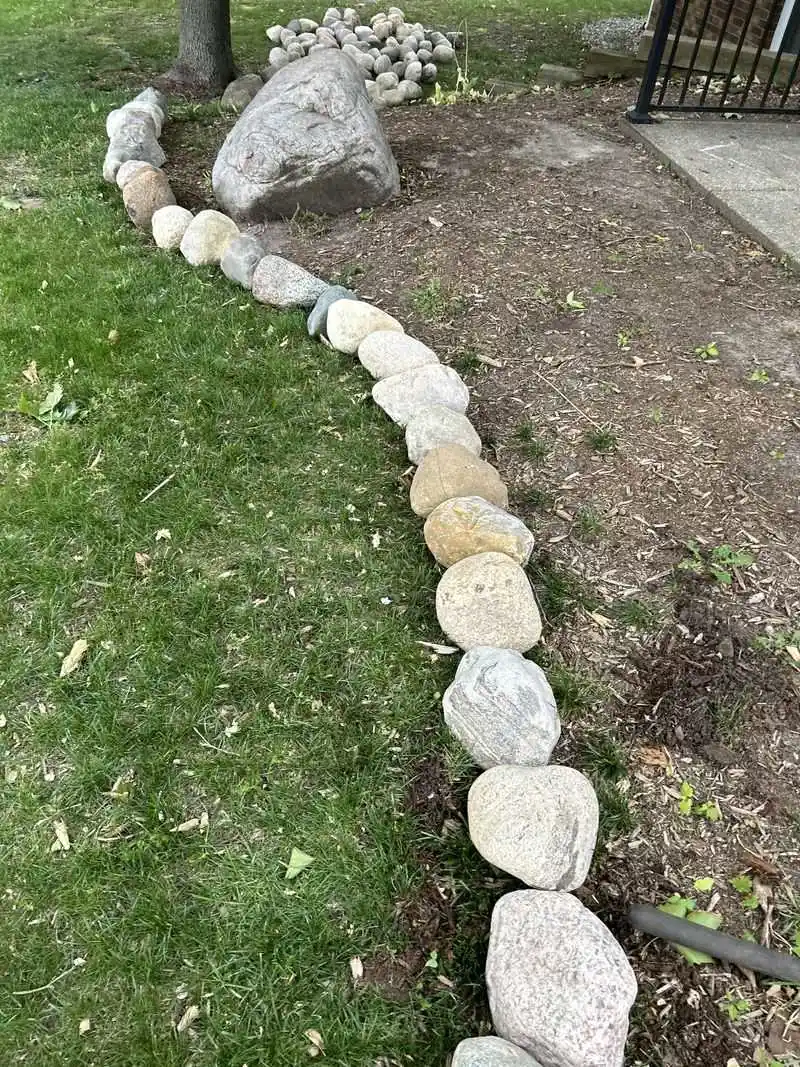
Dry-stacked stone borders provide a rustic charm, allowing for flexibility and natural drainage. These structures adjust over time, offering unique character.
Without mortar, the stones settle beautifully, echoing traditional craftsmanship. The irregularities contribute to the garden’s individuality.
Using dry-stacked borders adds an authentic touch, connecting modern gardens to timeless building techniques and enhancing their organic appeal.
Contrasting Rock Color With Foliage
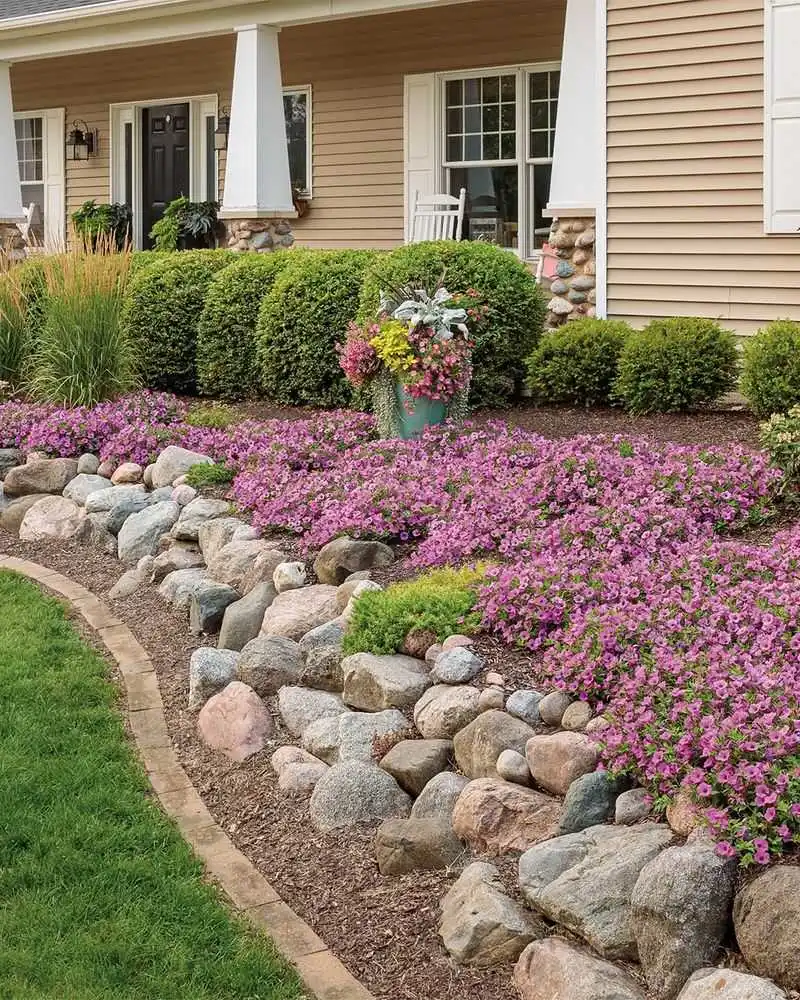
Contrasting rock colors with plant foliage can create a striking effect. Dark slate pairs beautifully with silver leaves, while pale stones brighten shady areas.
Choosing complementary colors enhances both rock and plant features. This technique emphasizes texture and form.
Strategically chosen contrasts elevate garden design, allowing each element to shine without relying solely on vibrant blooms.
Creating Levels With Stone Terraces
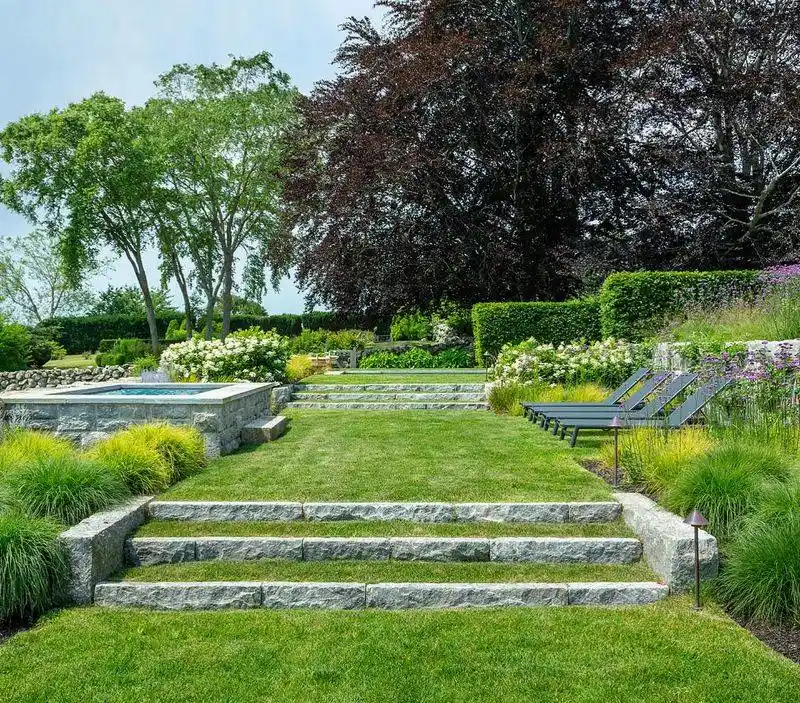
Stone terraces introduce levels, adding depth to flat gardens. These structures prevent soil erosion and offer new planting zones.
Terracing controls water flow, making maintenance easier and enhancing visual interest. It turns uneven spaces into harmonious landscapes.
By building terraces, gardens gain dimensionality and functionality, reflecting the natural beauty of stepped terrains.
Japanese-Inspired Rock and Rake Gardens

Japanese rock gardens, with raked gravel and strategically placed stones, create serene visual pauses. These minimalist designs are perfect for courtyards or quiet corners.
Focusing on texture and space rather than blooms, they offer tranquility and contemplation. The simplicity invites reflection.
Incorporating Japanese elements adds cultural depth and elegance, providing a peaceful retreat within any garden setting.
Tucking Plants Between Rock Crevices
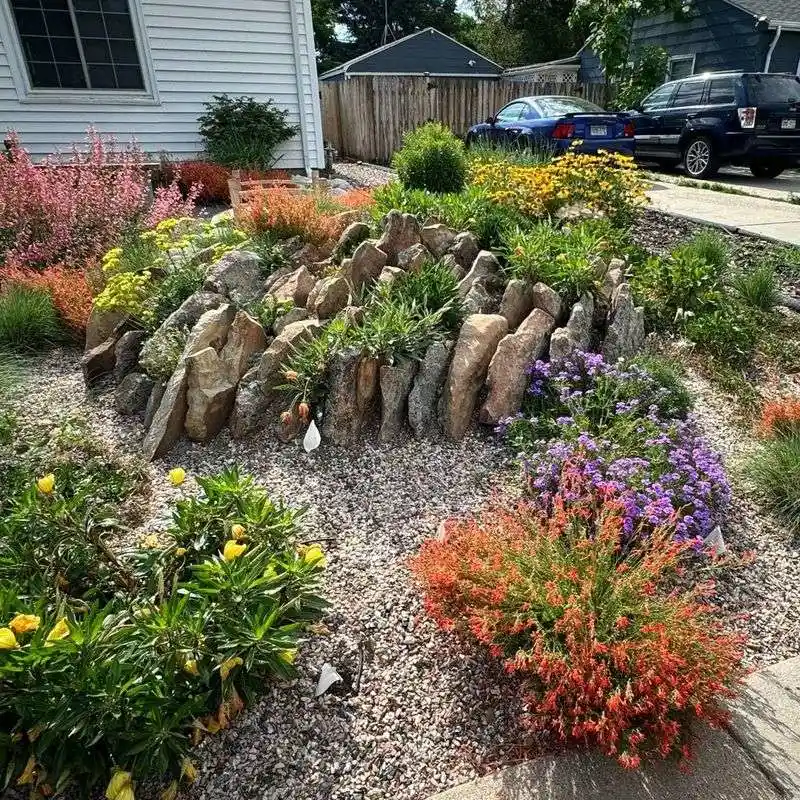
Plants like creeping thyme or stonecrop thriving in rock crevices bring life to otherwise barren areas. This setup mimics natural alpine environments.
These resilient plants soften the rocky landscape, adding color and texture. They thrive in tight spaces, enhancing the garden’s biodiversity.
Utilizing crevice planting techniques promotes a symbiotic relationship between rock and plant, celebrating nature’s adaptability and resilience.

